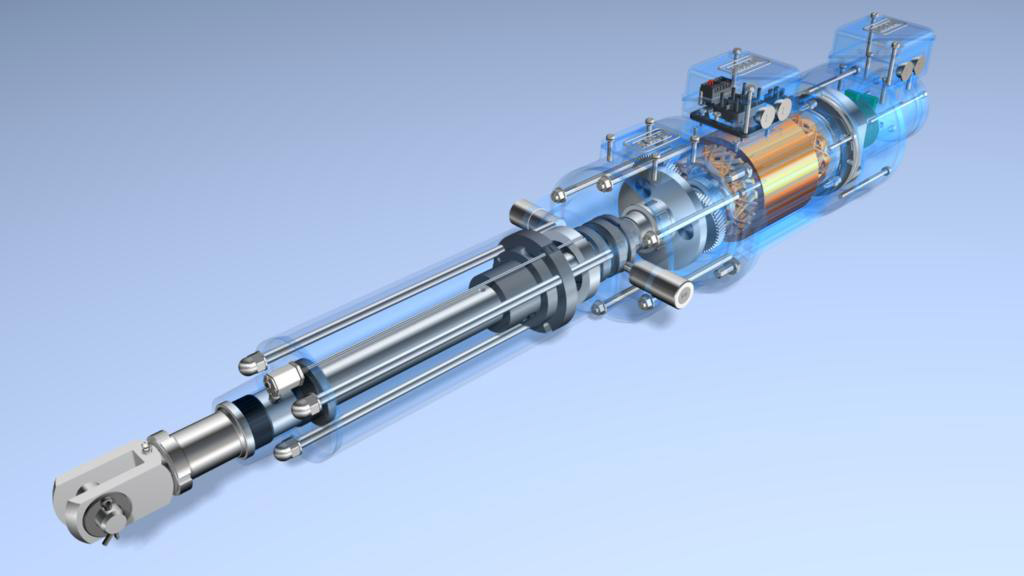Electric linear cylinders are rapidly emerging as a critical component in automation across various industries. With their ability to provide precise linear motion control, these cylinders are playing an increasing role in manufacturing and production processes that require high accuracy and repeatability.
What are Electric Linear Cylinders?
An electric linear cylinder, also known as a linear actuator, uses an electric motor to generate controlled linear motion instead of rotational motion. It consists of a motor, slide mechanism, and position or force sensor that work together to move a slide or rod linearly along its axis. Several types of electric motors like AC synchronous, DC brushless, and stepper motors are commonly used to power linear motion. The positioning accuracy can range from basic open-loop control to fully closed-loop servo control based on encoder or force feedback.
Electric linear cylinders offer precise linear control over long or short strokes. They provide programmable positioning, variable speeds, and the ability to hold payloads at any point along the stroke. This makes them well-suited for applications that require repetitive, steady motion like pick-and-place, part assembly, motion simulation etc. Compared to pneumatic cylinders, electric linear cylinders have faster response times, minimal maintenance needs, and do not require external air/fluid power sources.
Applications in Manufacturing
Automated Machining: Electric Linear Cylinders are increasingly used to automate precision machining processes like CNC milling and turning. They move workpieces, tools and fixtures with micron-level accuracy required for intricate parts. Servo-controlled cylinders provide synchronized multi-axis motion for complex 3D machining.
Automated Assembly: Pick-and-place assemblies on production lines widely use electric cylinders to accurately position components before fastening or joining. They can handle payloads from a few grams to hundreds of kilograms with repeatability better than pneumatic or hydraulic options.
Food & Packaging Machinery: Food processing equipment relies on electric linear actuators to portion, fill, seal and package products. They position tools and nozzles, index conveyors and activate mechanical components like lids, caps and doors at high throughput rates.
Semiconductor Manufacturing: The fabrication of computer chips and electronics requires utmost precision that electric linear actuators deliver. They handle wafers, precisely dispense chemicals and position probes/tools in cleanroom environments at the sub-micron level.
Robotics: As robotic arms and collaborative robots get popular, electric cylinders enable precise motion control of linkages, joints, grippers and end-effectors. They withstand high cycle rates for repetitive pick-place tasks done by robots.
Electric Linear Cylinders in Other Sectors
Elevators & Lifting Systems: In elevators and handicap lifts, electric linear actuators smoothly raise and lower cabs or platforms. Stage lifting mechanisms for theaters and concert events also rely on them.
Test & Measurement: Motion simulators, shakers and dynamic test systems employ arrays of electric linear actuators to replicate real-world vibration and load profiles on components or full vehicles very accurately.
Medical Technology: Diagnostic imaging machines, surgical robots, rehabilitation devices and prosthetics utilize electric linear motion for positioning patients, tools or augmenting body movements.
Automotive Manufacturing: Press shops making auto body panels and other stamped parts automate tool changing using electric cylinders that change forming dies faster than pneumatic versions.
Benefits of Electric Linear Technology
The advancements in electric motor, drive and controller technology have made linear motion control more precise, efficient and affordable than before. Some key benefits of Electric Linear Cylinders include:
– High force and speed with minimal maintenance required, even in continuous cyclic motion
– Nanometer and better resolution achievable with closed-loop servo control and encoder feedback
– Programmable multi-axis motions and synchronized coordination of complex pathways
– Variable speed profiles and dynamic motions possible for simulation and testing needs
– No external air/fluid supply required unlike hydraulic or pneumatic cylinders
– Repeatable movements over millions of cycles with little to no degradation in performance
– Suitable for applications in wet, corrosive or vacuum environments where other actuator technologies may not work
– Integration with industrial PLCs, CNC, and robot controllers for automated processes
*Note:
1. Source: Coherent Market Insights, Public sources, Desk research
2. We have leveraged AI tools to mine information and compile it


